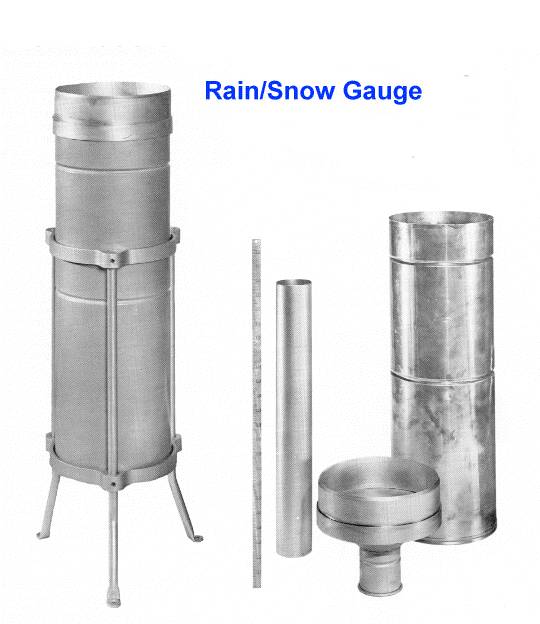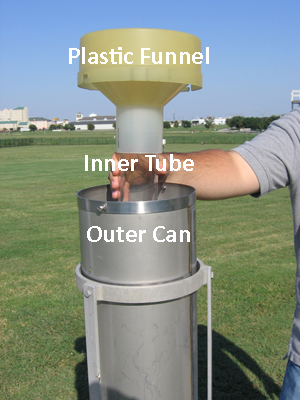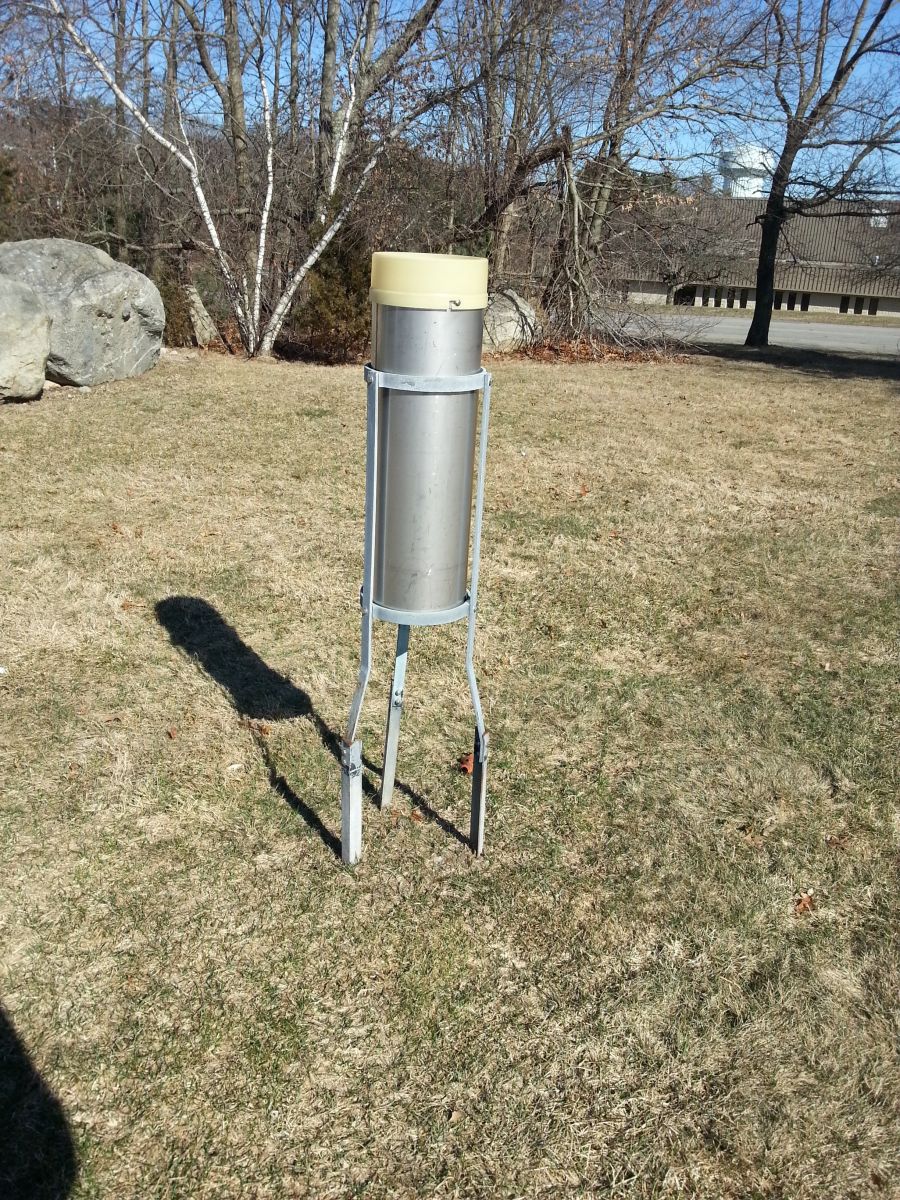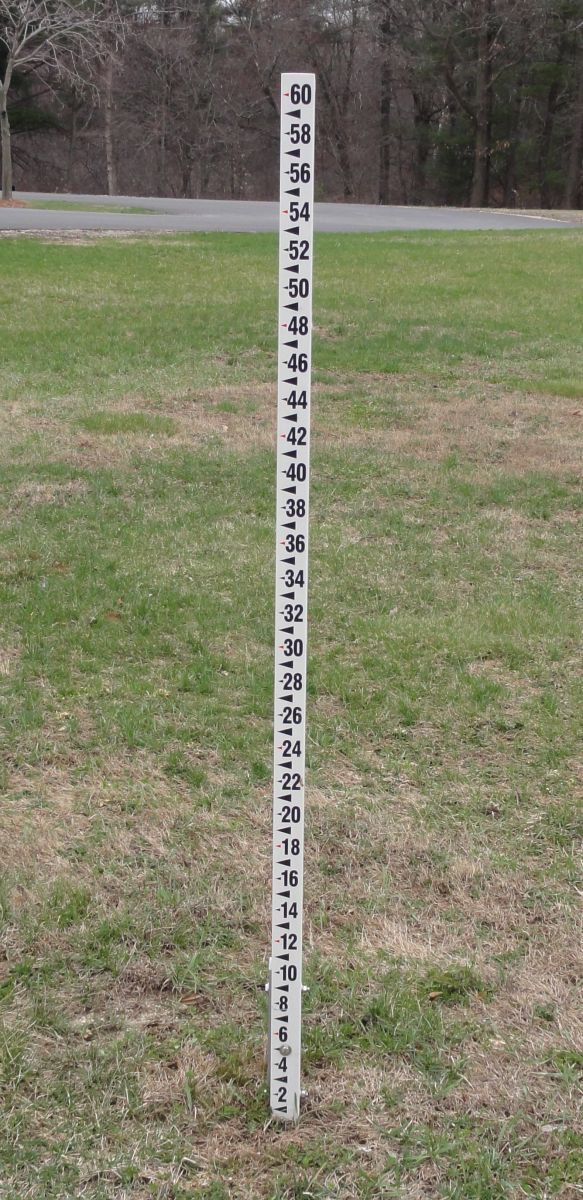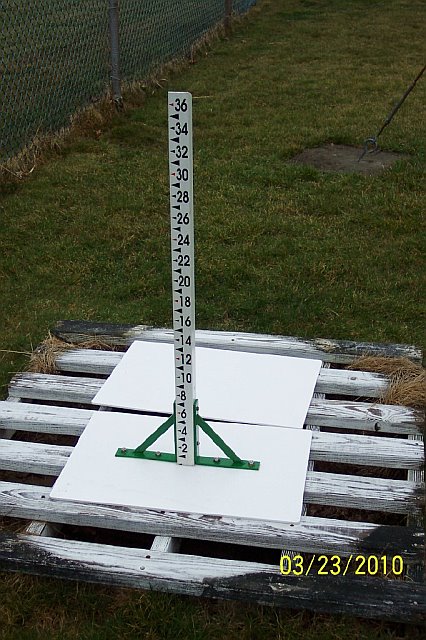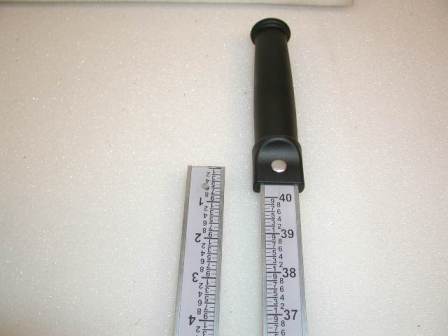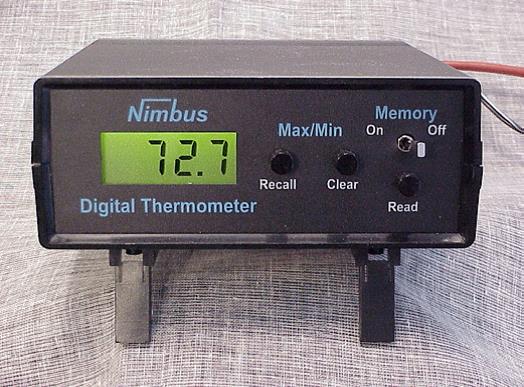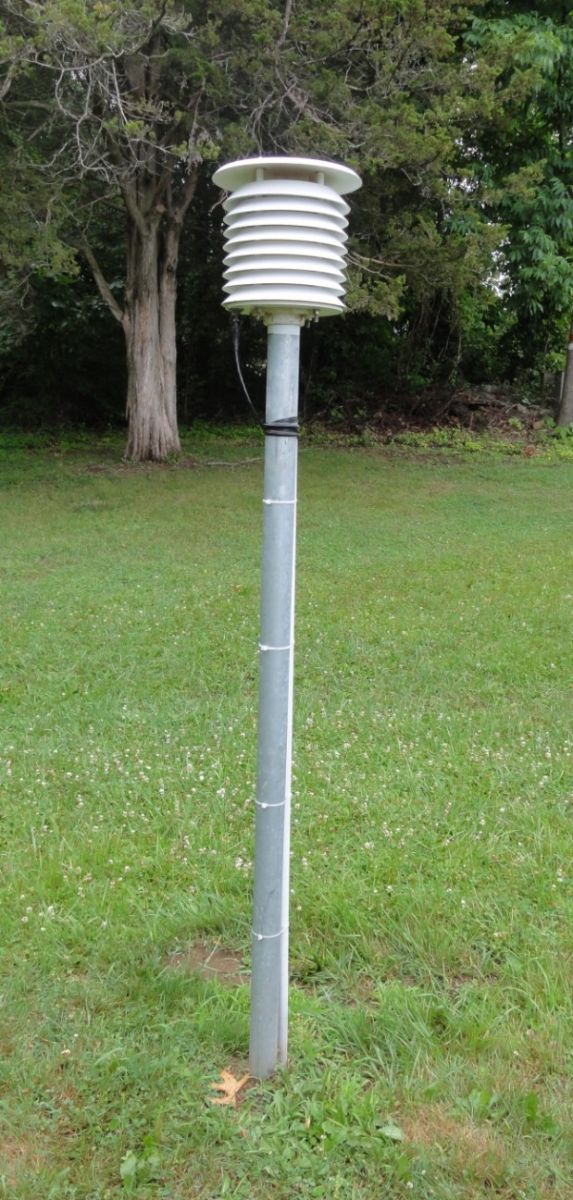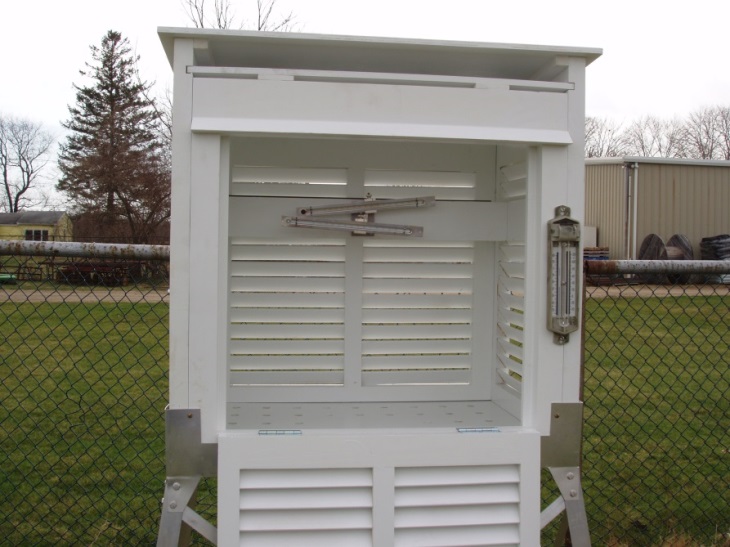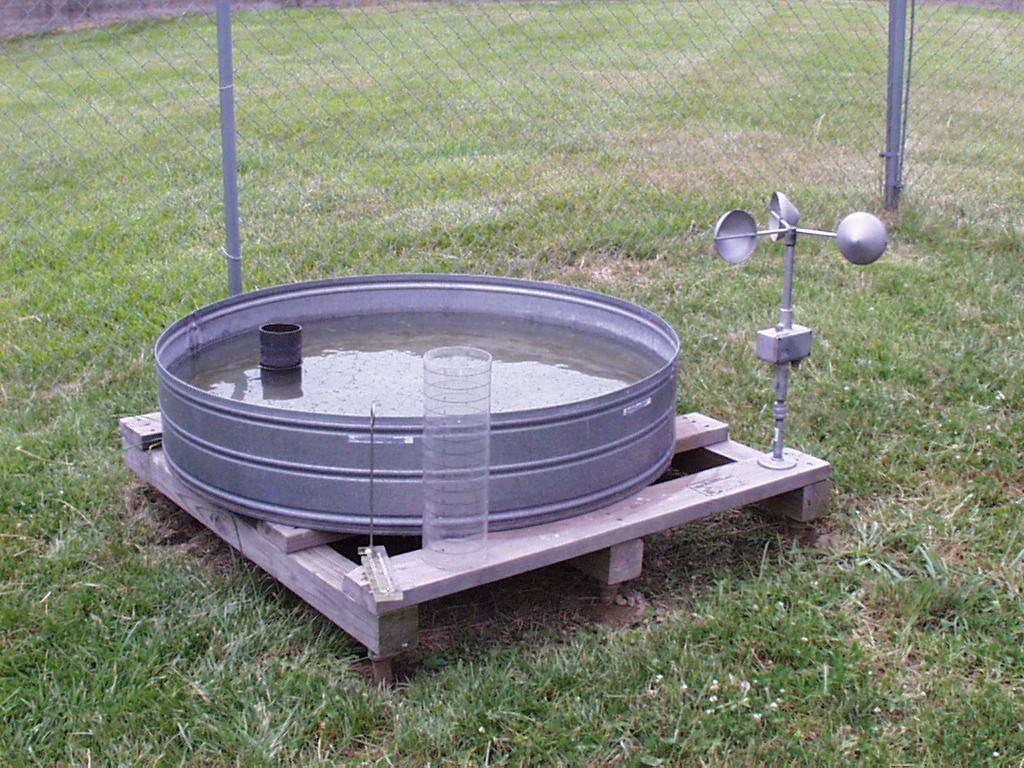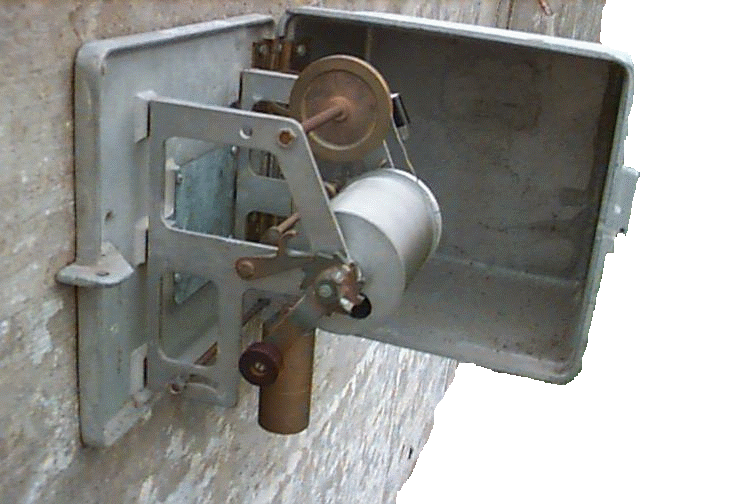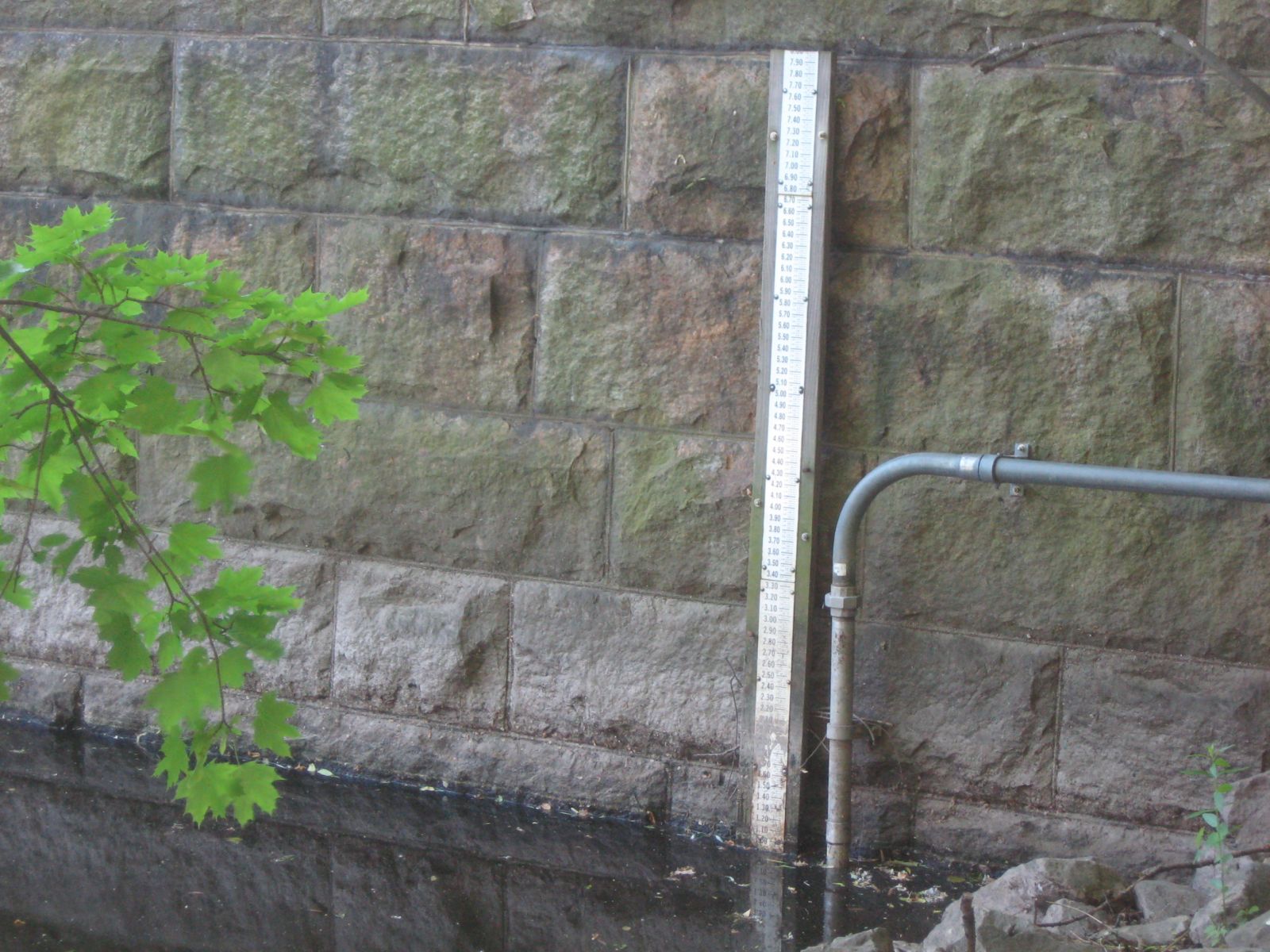Standard Rain Gauge
The instrument used for recording precipitation is the 8-inch Standard Rain Gauge (SRG) and interestingly this has been the instrument of choice for more than a century. The diameter of the can is 8-inches - thus the name. The components of the SRG include the outer can (also know as an overflow can), inner tube, funnel, precipitation stick and tripod support.
For the Charleston Weather Forecast Office area of responsibility, all weather stations are equipped with the SRG (pictured below) to record daily precipitation.
The funnel does just that - it
funnels
the rainfall into the inner tube. In order to provide rainfall measurements to the hundredths of an inch, the measuring tube has a cross sectional area that is one-tenth the cross-section of the funnel. Therefore, when 1 inch of rain falls into the funnel, it fills the measuring tube to a depth of 10 inches. Accordingly, the scale of the measuring stick used with the SRG is graduated to hundredths of an inch.
The measuring tube is 20 inches high and holds exactly 2.00 inches of water. Any additional rainfall will cause the tube to overflow into the outer can - thus the name
overflow can.
Since rainfall depths in the overflow can are not increased 10 times, the measuring stick can not be used in the overflow can. Instead, the accumulated water in the overflow can must be poured into the inner tube then measured with the precipitation stick. This overflow amount is then added to the 2.00 inches which originally caused the water to flow into the overflow can. While the inner tube can hold up to 2.00 inches of water, the overflow can has the capacity to hold 20.00 inches of water.
Snow Board and Snow Stick
Pictured, below, left, is a 5-foot snow stake.
Pictured below, center, is a 3-foot snow stake. This stake is helpful in winter to determine the amount of snow remaining on the ground - snow depth. The stake is hatched in whole inches which is how COOPs report snow depth.
Pictured below, far right, is a 40 inch snow stick used for measuring snowfall. The stick is hatched in tenths of an inch which is how COOPs report snowfall.
In the winter time the SRG becomes a snow gauge. The measuring tube and funnel are removed, allowing wintry precipitation to fall directly into the overflow can. At the time of observation, if there is snow in the overflow can, the COOPs will bring the snow gauge indoors, melting the snow with a pre-measured amount of hot water from the inner-tube, then pour both the melted snow and hot water back into the inner-tube, subtracting the amount of hot water added to get the true amount of water for the melted snow. Using the precipitation stick, the COOPs can then get the liquid measure of the wintry precipitation that fell.
At the time of observation, COOPs will also measure any snow that fell during the observation period. Using a snow stick they measure snowfall to the nearest tenth of an inch. They also will report any snow remaining on the ground (snow depth) to the nearest whole inch. Snow depth is the accumulated snow from previous snow storms.
Temperature Sensor
Many observers record temperature readings: the 24-hour high and low temperatures and the temperature at observation. COOPs report temperature to the nearest whole degree Fahrenheit.
Most COOP sites are equipped with an electronic Maximum/Minimum Temperature System (MMTS) which electronically measures and memorizes the daily maximum and minimum temperatures. But there are a few sites that use the old style liquid-in-glass (LIG) thermometers. The LIG thermometers are housed in a Cotton Region Shelter (CRS) which provides a shaded, well-ventilated area for maximum and minimum thermometers used to acquire daily temperature extremes. The maximum thermometer is made of a long tubular glass filled with mercury whereas the minimum thermometer is a long tubular glass filled with alcohol. Another LIG thermometer that is used by some COOPs is the Taylor U-Tube thermometer.
Pictured is an MMTS system sensor (center) along with the Nimbus readout display unit (left). Inside the CRS (right) are the LIG Max/Min thermometers. On the outside of this CRS and to the right is a Taylor U-Tube Max/Min thermometer.
Evaporation
Some stations have evaporation equipment to document moisture evaporation data used in both hydrology and agriculture.
An evaporation station consists of a pan filled with water, an anemometer that measures wind-run across the pan of water, a submersible thermometer that measures the pan-water temperature, and a hook gauge that measures the amount of evaporation from the pan.
River Gages
Many observers take river and stream level reading to support the NWS hydrology forecast and warning programs. Water levels are measured using either a Wire Weight River Gage or Staff Gage (shown below, respectively).
